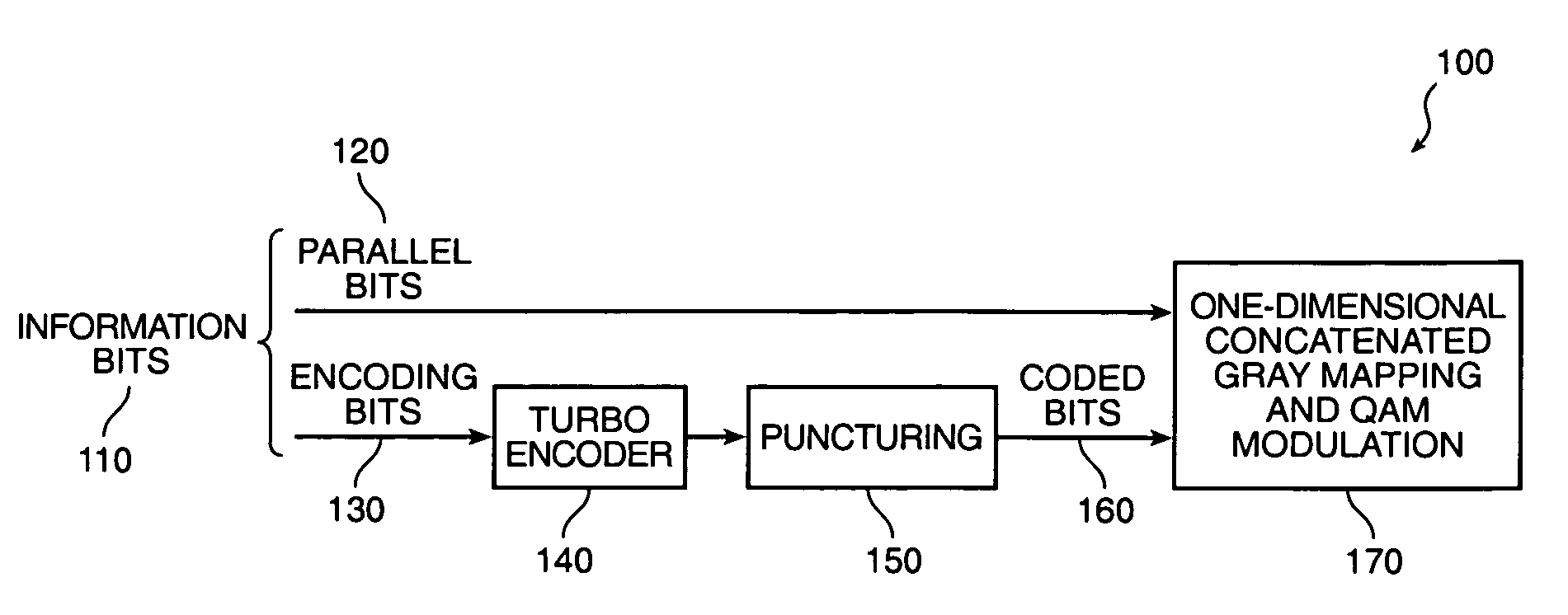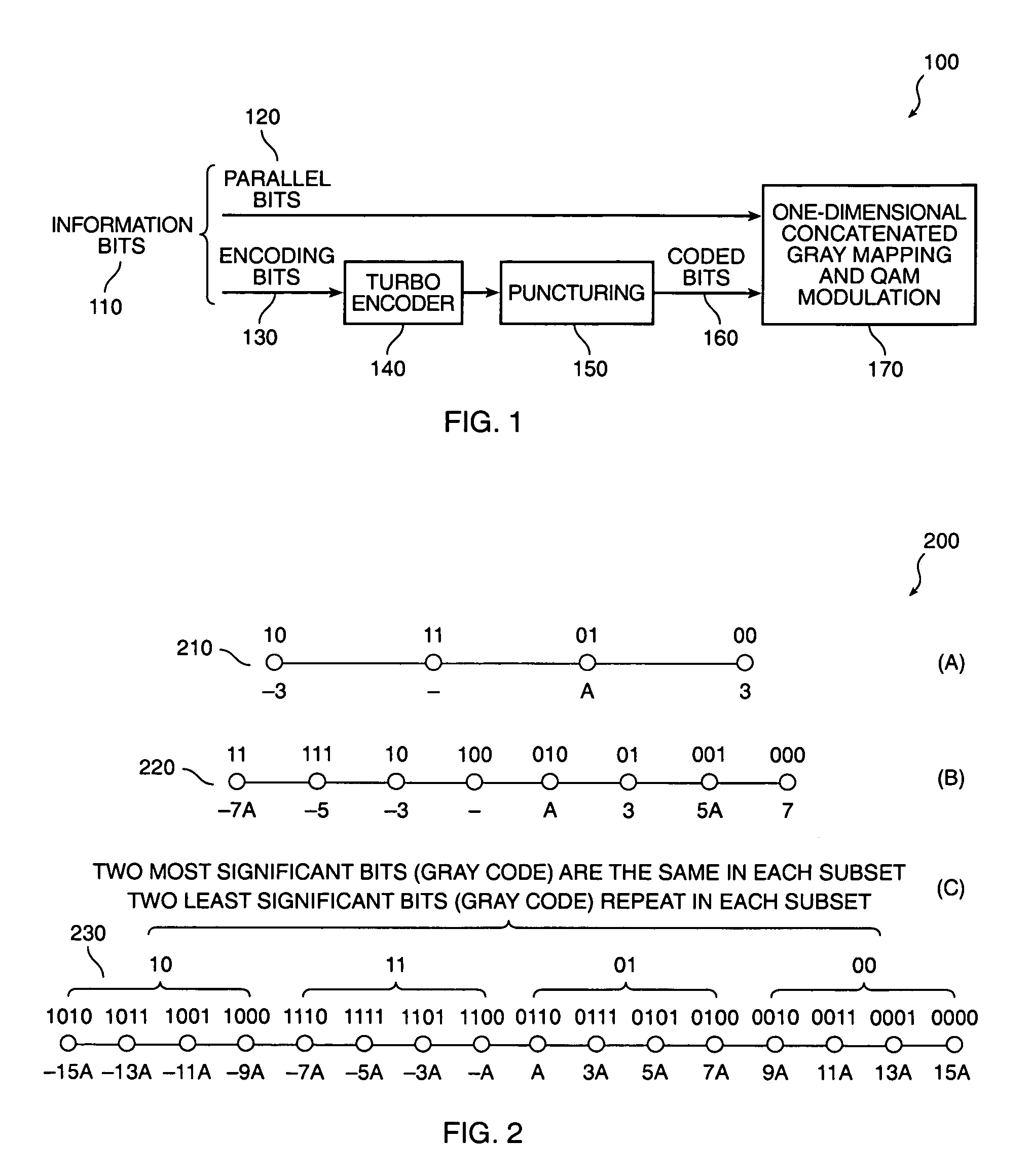Method and system for turbo encoding in ADSL
a technology of turbo encoding and adsl, applied in the field of asymmetric digital subscriber line (adsl) communication systems, can solve the problems of de-mapper (which calculates), adds redundancy and memory to the transmission, and corresponding increase in decoder complexity
- Summary
- Abstract
- Description
- Claims
- Application Information
AI Technical Summary
Benefits of technology
Problems solved by technology
Method used
Image
Examples
Embodiment Construction
[0035]In the following description, numerous specific details are set forth to provide a thorough understanding of the invention. However, it is understood that the invention may be practiced without these specific details. In other instances, well-known software, circuits, structures and techniques have not been described or shown in detail in order not to obscure the invention. In the drawings, like numerals refer to like structures or processes.
[0036]The term asymmetric digital subscriber line (ADSL) is used herein to refer to a technology for transmitting digital information which simultaneously transports high bit-rate digital information downstream to a subscriber or customer, lower bit-rate data upstream from the subscriber, and analog voice typically via a twisted-wire-pair.
[0037]The term amplitude shift keying (ASK) is used herein to refer to a modulation technique that uses one signal of constant frequency, but varies the strength of the signal according to the state of th...
PUM
 Login to View More
Login to View More Abstract
Description
Claims
Application Information
 Login to View More
Login to View More - R&D
- Intellectual Property
- Life Sciences
- Materials
- Tech Scout
- Unparalleled Data Quality
- Higher Quality Content
- 60% Fewer Hallucinations
Browse by: Latest US Patents, China's latest patents, Technical Efficacy Thesaurus, Application Domain, Technology Topic, Popular Technical Reports.
© 2025 PatSnap. All rights reserved.Legal|Privacy policy|Modern Slavery Act Transparency Statement|Sitemap|About US| Contact US: help@patsnap.com



